The Best Shopify Plugins For Ecommerce In 2021
By Rodney Laws | Ecommerce

Even in its most basic form, the Shopify ecommerce platform is among the most well-rounded you can use, making it easy to start a Shopify store and get selling without spending a lot of money or needing web-development skills. It’s also hugely scalable: there’s a reason why big brands like Heinz and Bulletproof have retained it as they’ve grown.
But that core level of functionality is just the starting point. Through the numerous high-quality integrations available through the Shopify App Store, it’s possible to build a store that offers a unique array of features and design elements. In ecommerce, standing out from the crowd is a key objective, so the right plugins (or apps) for your online store can help you reach that point.
In this post, we’re going to focus on the best Shopify plugins, picking out a selection of apps that have great potential to save you time, get you seen in search engines, increase your revenue, and grow your brand. Some are free, while others will cost you: regardless, they’ll produce outstanding ROI for your Shopify store if you use them properly, and a 14-day-free trial is almost always available. Let’s get started.
There are many ways in which you can improve an ecommerce store, and that’s reflected in the immense range of plugins on offer: the Shopify App Store hosts almost two-and-a-half thousand apps, each of which has been tested to ensure full compatibility. If you commit to trawling through them and painstakingly picking out the apps that catch your eye, you’ll be looking for a long time — so here’s a shortlist of the top picks to help you get started:

If you’ve yet to consider selling internationally, you’re leaving money on the table. Through the rich fulfilment networks offered by global brands like Amazon, it’s possible to efficiently and economically move your products into myriad new markets. There are two key challenges, though: understanding those markets, and getting your presentation right.
The former will require extensive research. What of the latter? Well, you may need to tweak your brand colours and swap out some pop-culture references, but the main obstacle will be language. Most countries have English as a second or third language, yes, but a store that uses the visitor’s first language will inevitably prove more successful.
Weglot’s Shopify Translation App was designed to make it optimally easy to get your store translated to any language you want to target. In addition to automatically translating every part of your store (including the navigation and the checkout process, of course), this free app (free to install, at least) allows convenient refinement of the automatic translation, making it simple to correct the inevitable errors. It also happens to adhere to best practices for multilingual SEO, ensuring proper regional indexing.
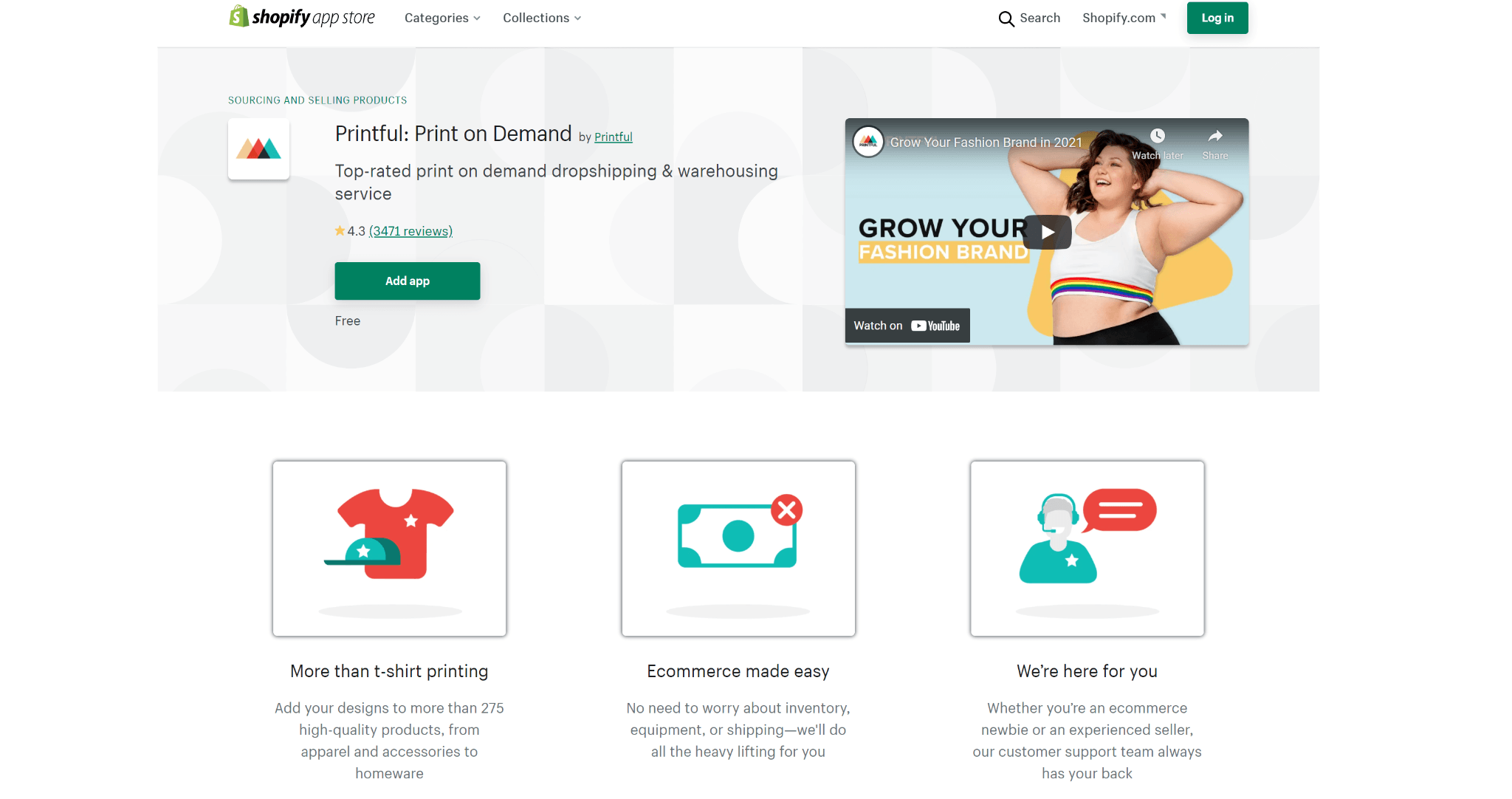
Modern ecommerce sellers benefit hugely from adding revenue streams, and one of the best ways to do this is to cultivate brands they can subsequently monetize through selling branded merchandise. If you can build up a logo-and-slogan combination that your customers respond to, you can add it to products like shirts and hats that can make you money outright or simply serve as effective purchase incentives (buy today and get a free hat, etc.).
Printful’s print-on-demand service (which happens to be a 100%-free plan) makes this merchandising effort incredibly simple. You don’t need to stock anything at all, deal with the often-complex printing process, or even deal with the distribution side of things if you’d rather avoid it. All you need to do is choose from a range of generic (but high-quality) items, choose the text and imagery you want to feature, determine the optimal profit margins, and add the custom products to your store through the integration. Just a few clicks can change everything.
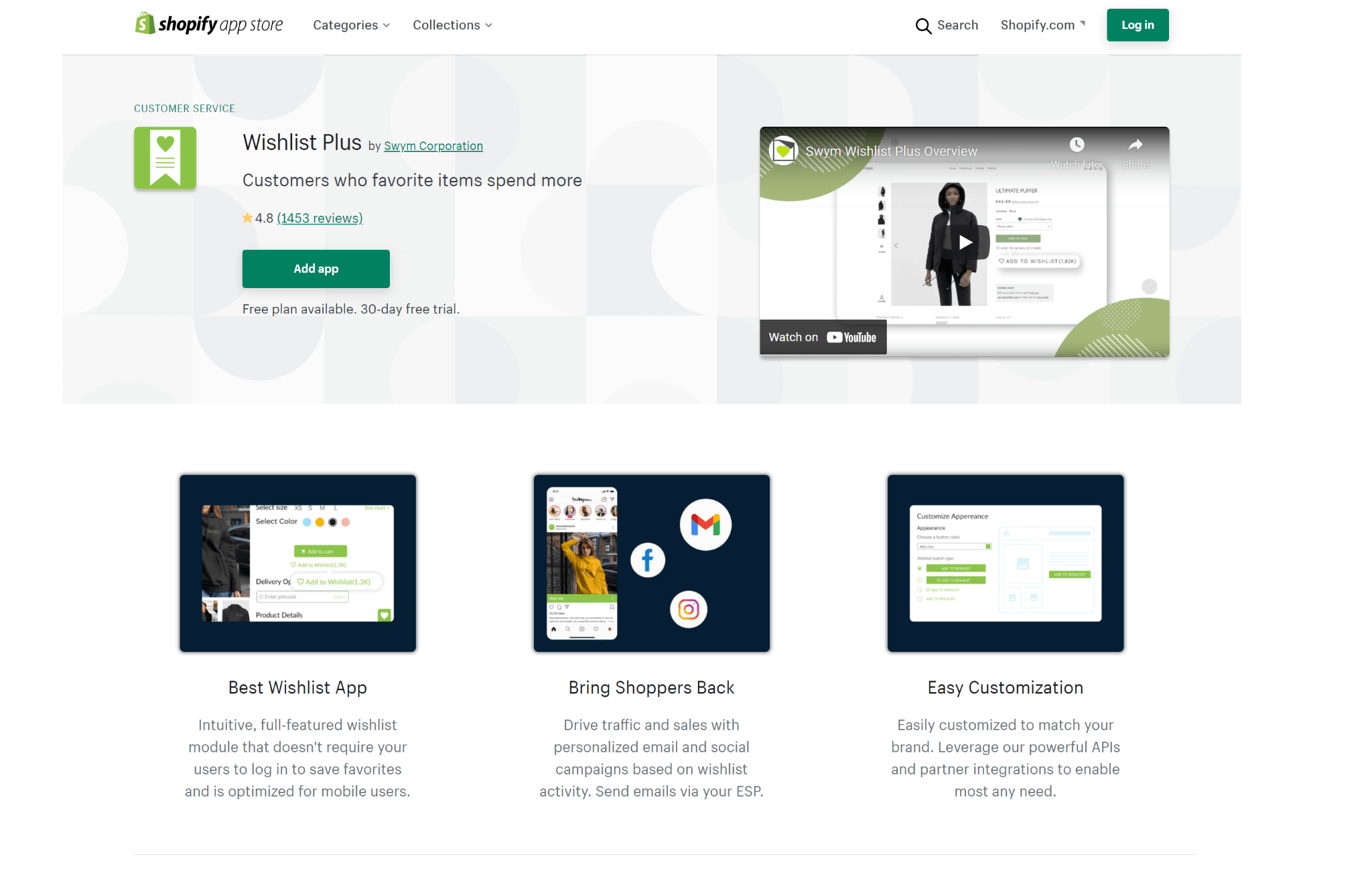 When people visit online stores, they don’t always want to buy immediately — or maybe there are certain things they do want immediately, but they’re also open to learning about things they may wish to buy later. It’s massively frustrating to get someone’s attention with a relevant product only to see them forget about it and never return to purchase it. So what can you do?
When people visit online stores, they don’t always want to buy immediately — or maybe there are certain things they do want immediately, but they’re also open to learning about things they may wish to buy later. It’s massively frustrating to get someone’s attention with a relevant product only to see them forget about it and never return to purchase it. So what can you do?
With the simple addition of a wishlist function, something you can easily add to your store through the convenient Wishlist Plus app (which does have a free plan), you can allow customers (or prospective customers) to line up items they might want to buy later. Being able to create a wishlist will encourage someone to return, and their interest may grow until they choose to place a large order. Your average order value stands to benefit significantly.
Note that this app doesn’t require user logins to work, and provides you with options for carrying out personalised targeted email campaigns for wishlist-using visitors who are logged in. If you think it might take just one more prompt to convince someone to buy an item they’ve been eyeing, you can deliver that prompt with great efficiency.
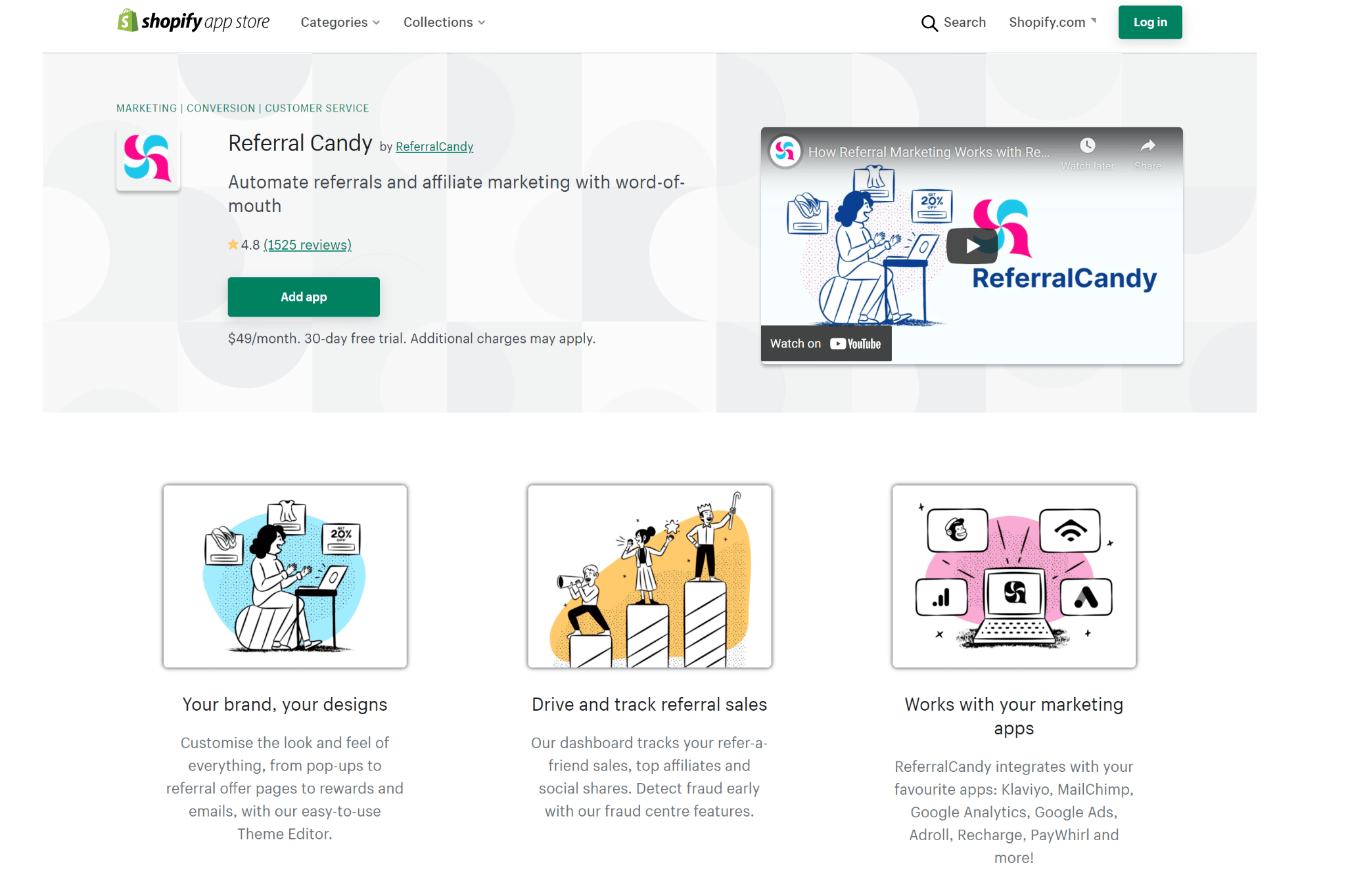 There are many ways to grow a store, but none is more powerful than word-of-mouth buzz. Every other form of marketing can feel relatively forced and awkward. If you can impress your customers so much that they start recommending you to their friends and family members, it can build up tremendous momentum for your brand. But even impressed customers won’t inevitably start talking up your business. You need to incentivise referrals.
There are many ways to grow a store, but none is more powerful than word-of-mouth buzz. Every other form of marketing can feel relatively forced and awkward. If you can impress your customers so much that they start recommending you to their friends and family members, it can build up tremendous momentum for your brand. But even impressed customers won’t inevitably start talking up your business. You need to incentivise referrals.
That’s where Referral Candy enters the picture. One of the most popular referral systems around, it provides everything you need to prompt, track and value recommendations from your customers. You can create custom pop-up forms to explain what’s on offer for those who send referrals your way, for instance, and offer straightforward recompense: instead of sluggishly gifting discounts, you can send payment immediately following a conversion.
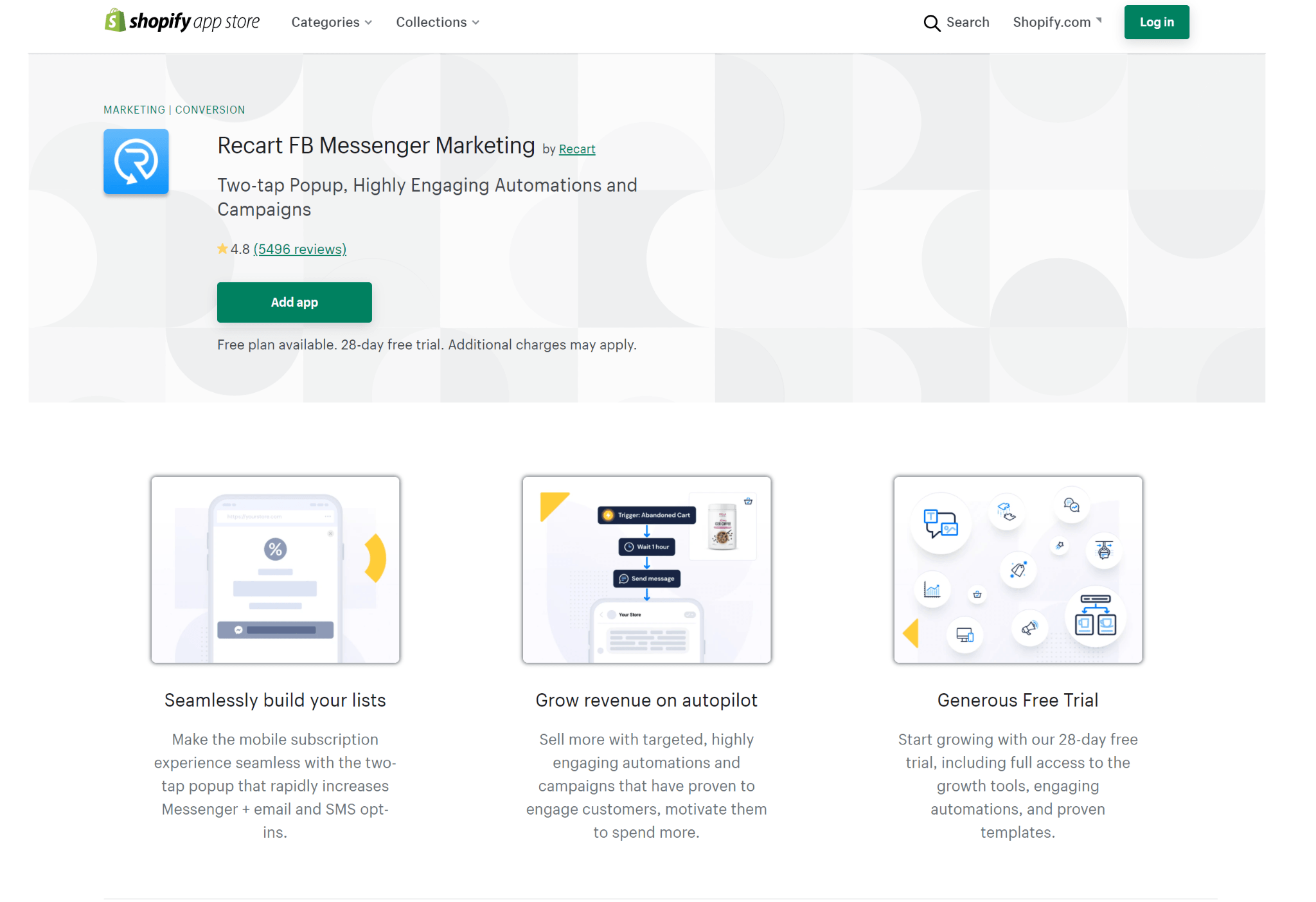
Smart marketing goes where potential customers can be productively reached, and that currently means taking advantage of social media channels. Facebook has billions of active monthly users, and most of them use Facebook Messenger for everything from keeping up with friends to booking restaurant tables. If you’re not using that channel to prompt some further customer purchases, you should be.
Hooking into Facebook accounts through social logins or offered incentives (10% off if you connect your Facebook account, etc.), the Recart Facebook messaging app is exceptionally useful for following up on visits that didn’t result in sales. Maybe someone left an item in their cart and forgot to return for it, or maybe they couldn’t find a certain item and gave up. If so, outreach via Facebook Messenger is more likely to be noticed than email outreach.
Usefully, in addition to chasing these missed sales through targeted prompts, Recart can send receipts, extend review requests, and even provide order updates. Configured smartly, it can produce greatly-enhanced customer experience without needing any ongoing effort from you.
 WhatsApp is extremely popular as a messaging platform, yet it hasn’t received as much attention as Facebook Messenger in the ecommerce world. This is a shame because many people would like to get assistance without needing to be logged into social media. With the Whatsapp Chat + Abandoned Cart app, you can support various other chat channels.
WhatsApp is extremely popular as a messaging platform, yet it hasn’t received as much attention as Facebook Messenger in the ecommerce world. This is a shame because many people would like to get assistance without needing to be logged into social media. With the Whatsapp Chat + Abandoned Cart app, you can support various other chat channels.
Yes, the name is a misnomer: the WhatsApp support is the star attraction, but you can also use the app to communicate via channels including Instagram Messenger, Tawk, Tidio, Telegram, and WeChat, to name just some. If you only want to use one app for social media support, bear in mind that it does support Facebook Messenger. It just wasn’t designed to do the things that Recart can do, so don’t go in with unrealistic expectations.
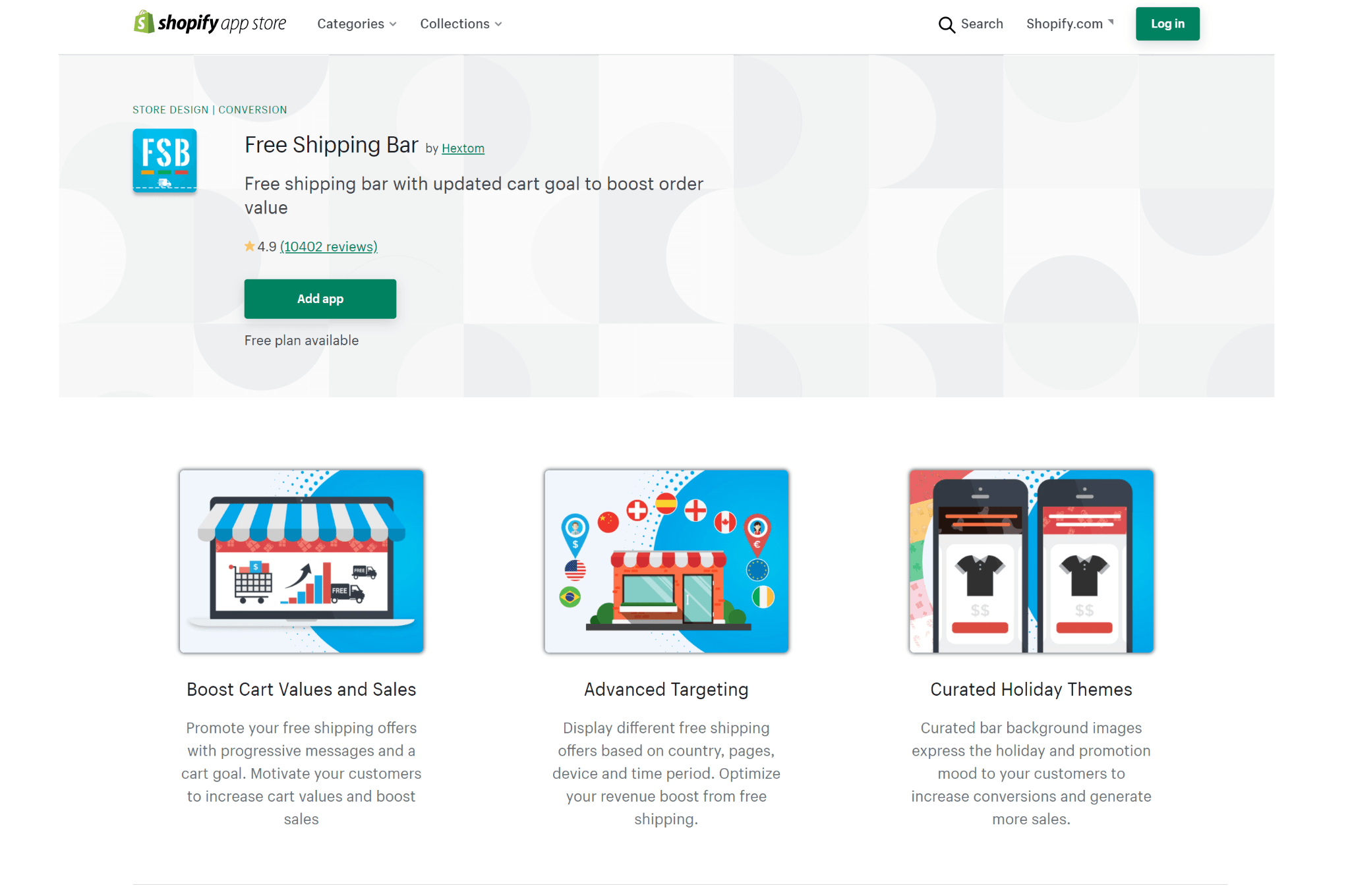
Regardless of the overall cost of an ecommerce transaction, the prospect of free shipping has astonishing power for raising your average order value. Consider the perfectly-plausible scenario of someone adding £30 to their order purely so they can hit a free-shipping threshold and save £5 as a result. Their overall spend is higher by £25, but they feel that they’ve won a contest of sorts.
The Free Shipping Bar app brings this phenomenon to the forefront of your store by prominently displaying (at the top of the page, no less) a free shipping bar (obviously) stating how close the shopper is to getting free shipping. Each item they add gets them nearer to that much-desired saving. It might sound trivial, but the psychological pressure really adds up — especially if you set custom messages to ramp up the motivation as they add items to their cart.
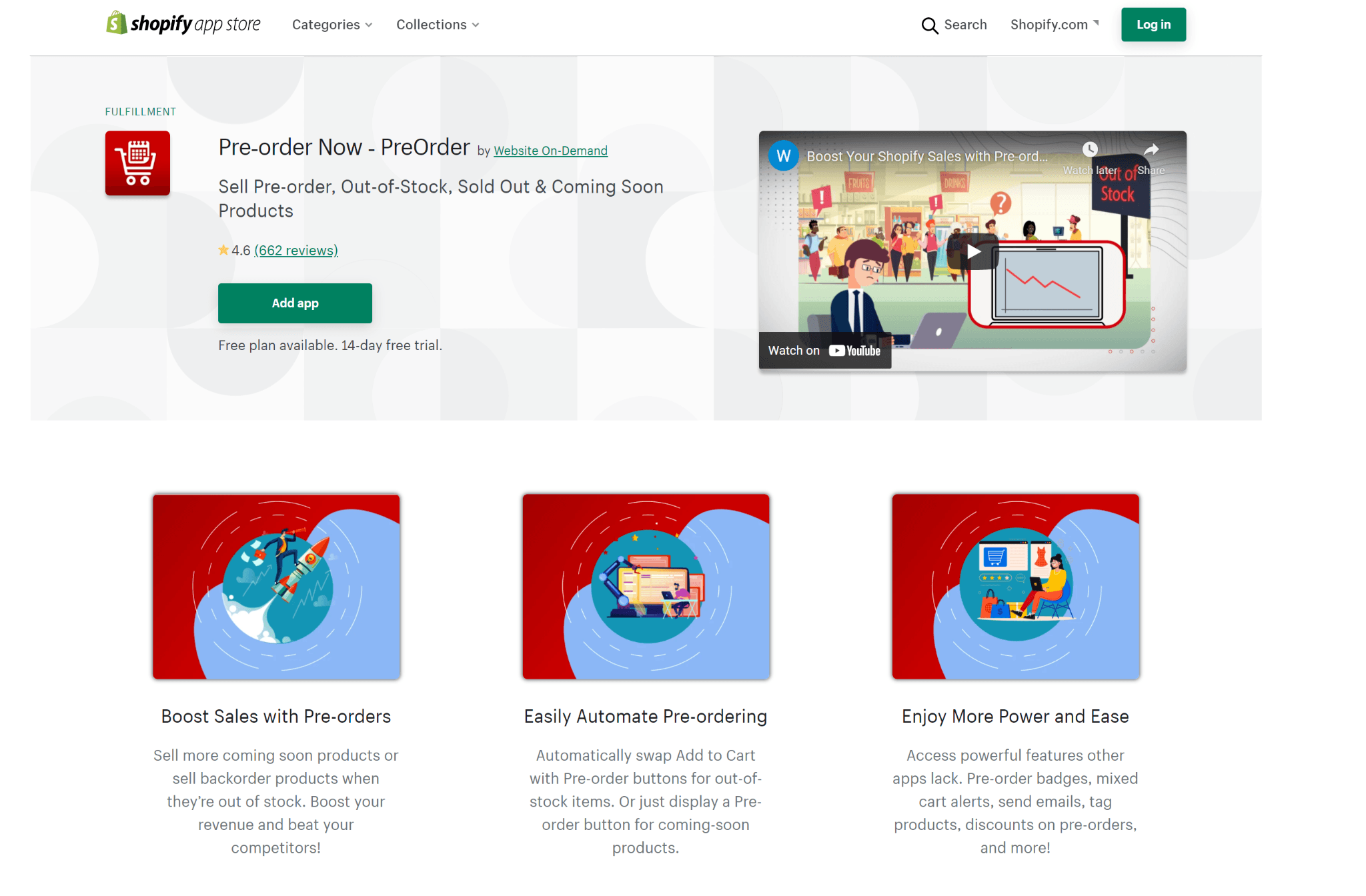
Missing a sale because a product is out of stock is frustrating, as is feeling unable to take advantage of the hype you’re building up for a pending product launch. With Pre-Order Now, you can bring a new dimension to your Shopify store by granting it easy support for pre-orders. Whenever an item is out of stock (or not released yet), you can let the pre-orders gather through automatically-swapped buttons, then fulfil them when you’re ready.
You can also implement early-bird specials with ease, applying automatic discounts to pre-orders for particular items and rewarding the customers who loyally follow your marketing materials. And to avoid confusion when shoppers mix order types, you can configure pop-up alerts to confirm their understanding before they place their orders: this is vital because people can otherwise get annoyed about their ordered items arriving at different times.
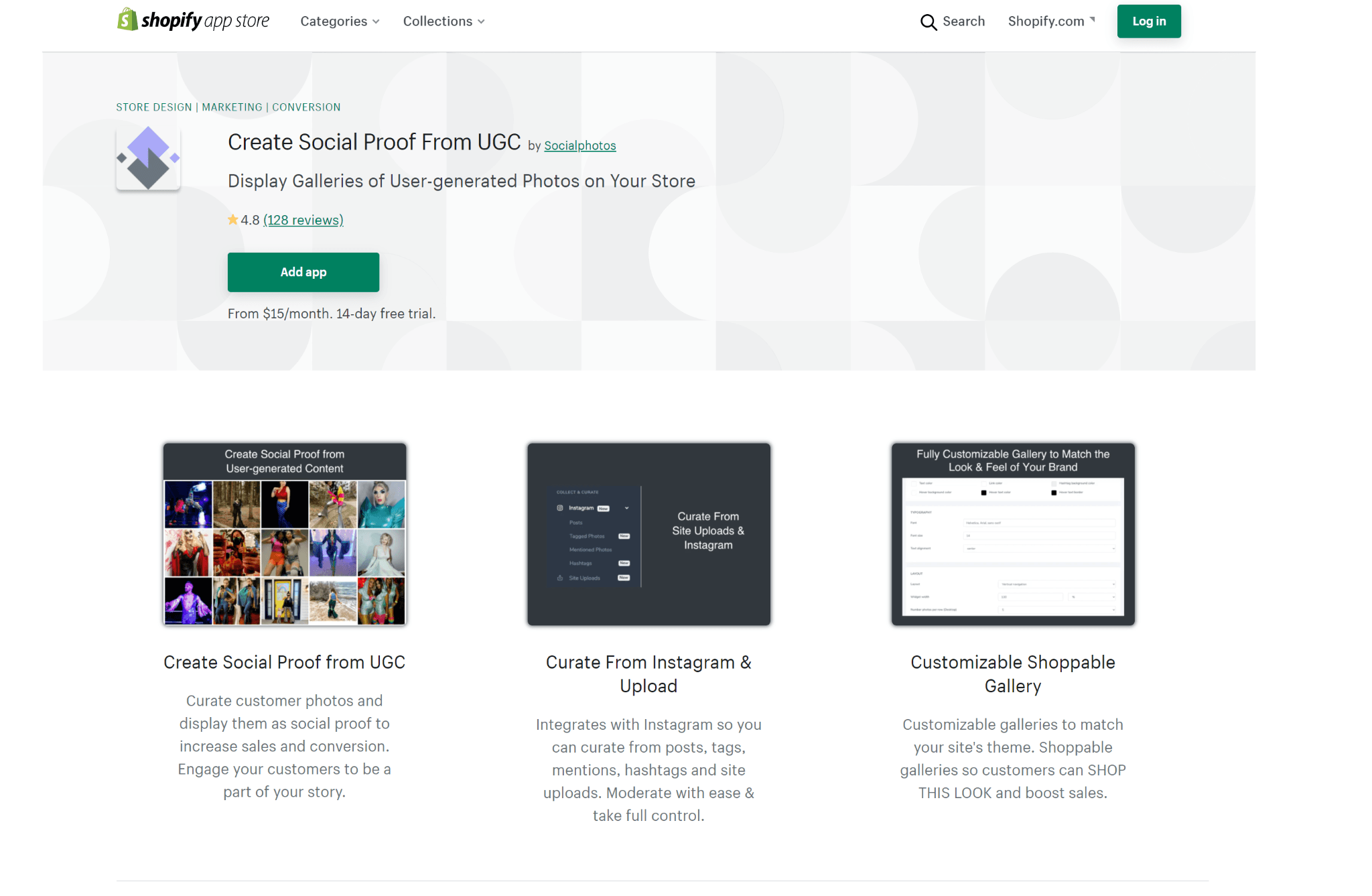 UGC, or user-generated content, brings a lot to the table from a promotional standpoint. It’s produced by people who don’t work for your company, making it much more credible, and it shows significant enthusiasm for your brand (leading new prospects to assume that your business must be fairly impressive).
UGC, or user-generated content, brings a lot to the table from a promotional standpoint. It’s produced by people who don’t work for your company, making it much more credible, and it shows significant enthusiasm for your brand (leading new prospects to assume that your business must be fairly impressive).
Socialphotos enables easy visual social proof through curating and displaying social media images that reference your brand. When someone posts on Instagram about the order they just received from you, tagging your account in the process, you can have a tag-based rule pick up on that and seamlessly add it to a social proof panel on your site.
The key thing here is that you have total control over which posts get pulled through, so you can carefully set the parameters to avoid accidentally displaying photos that are inappropriate for whatever reason (they may simply be somewhat negative about your brand). Showing many people happy with your products is a fantastic way to welcome someone to your Shopify store.
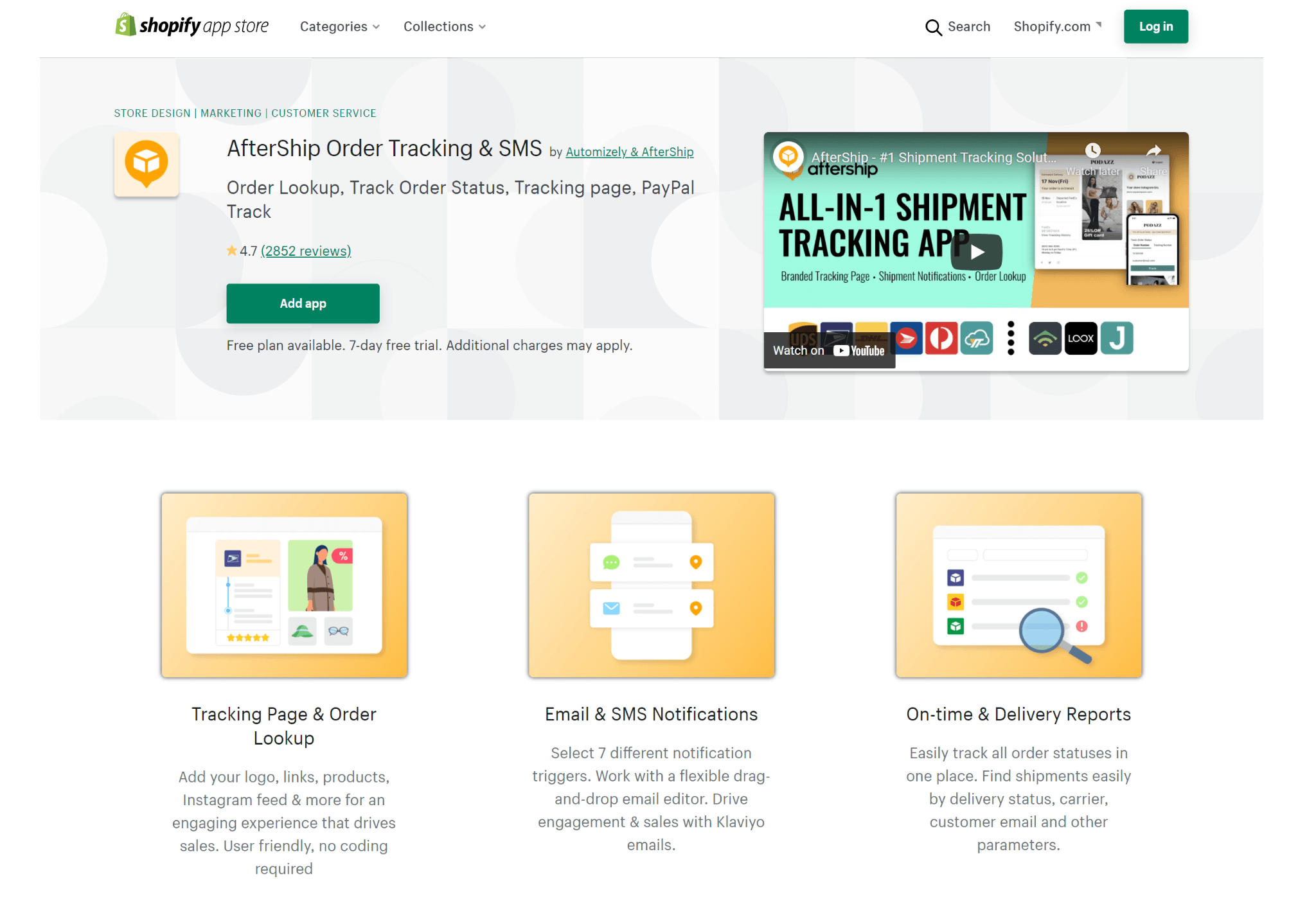
Thinking that your work is done once an order has been shipped is a huge mistake, because it’s the entirety of each customer’s experience that will determine whether they’ll return (and certainly whether they’ll recommend your store). Aftership is an app designed to help you enhance the post-purchase experience of your store, working to keep your customers happy.
It essentially serves as a hub for tracking information. You can provide a link to Aftership tracking at the point of conversion or at any time afterwards (in emails, for instance), bringing all courier types and shipping priorities together in one view that you can customise in accordance with your brand. This makes life easier for the customer because they don’t need to deal with different tracking systems using often-confusing shipping milestones: you can map every step to your core shipping progress system.
You can also use a drag-and-drop email editor to create high-quality update email templates, keeping your communications strong and thematically consistent across the board. Consistency is a key ingredient for today’s store owners: your customers want to know they can trust you.
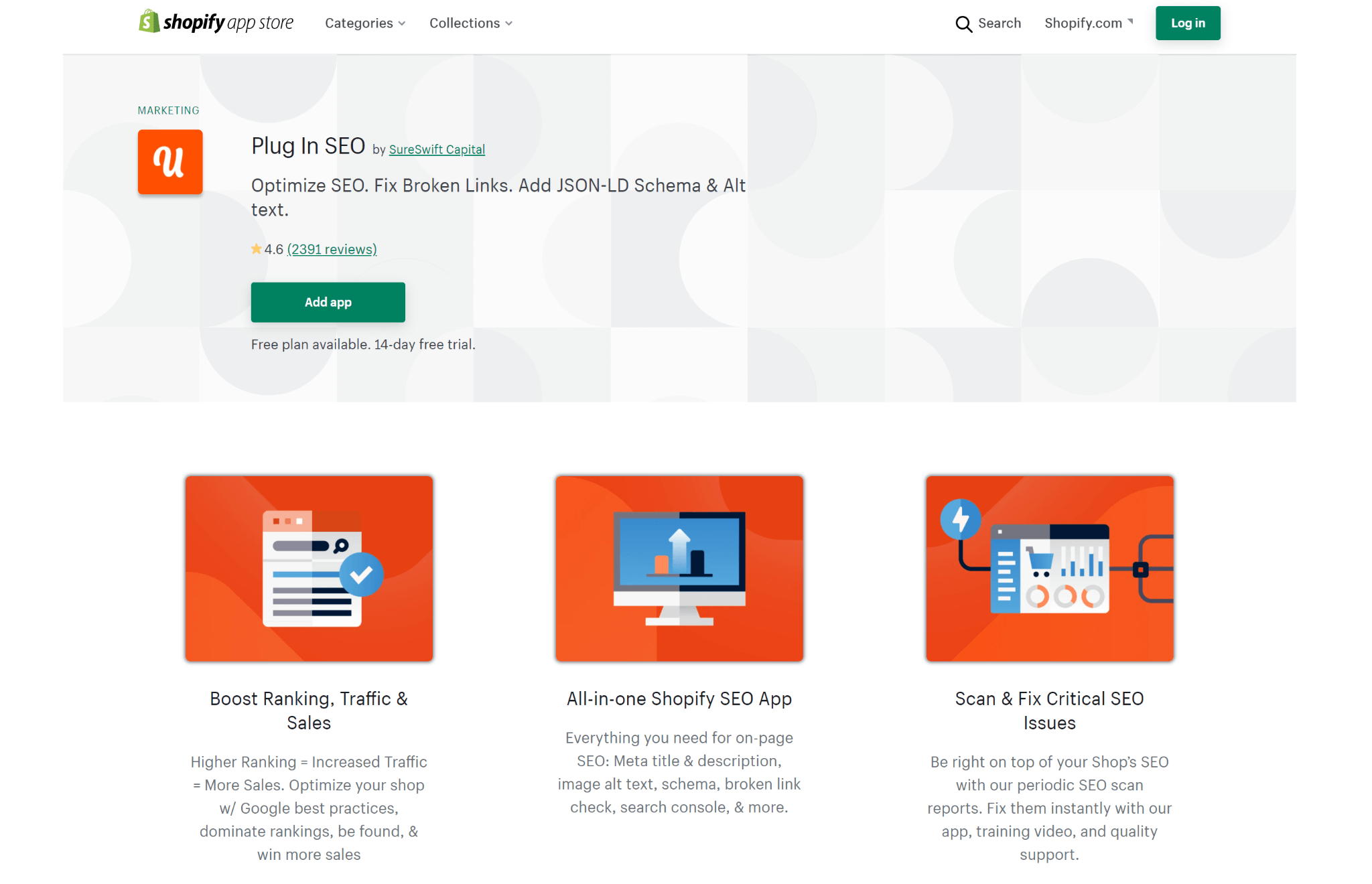
Ecommerce success relies heavily on search-engine traffic, with Google being the first stop for most online shoppers (and Google Shopping have a big role to play) — and while Shopify features some solid built-in SEO features, there’s always room for improvement. The Plug in SEO app makes SEO actions easier to implement, provides relevant training (very useful for beginners), and carries out SEO scans to identify potential ranking impediments such as missing meta tags or loading speed issues.
It also digs into your best-performing keywords, making it easier for you to tell which content areas you should focus on (and which pieces of existing content are worth taking the time to overhaul). If you’re not an avid follower of the SEO industry but won’t want to hire a dedicated agency to work on your site, this app might constitute the ideal middle-ground solution.
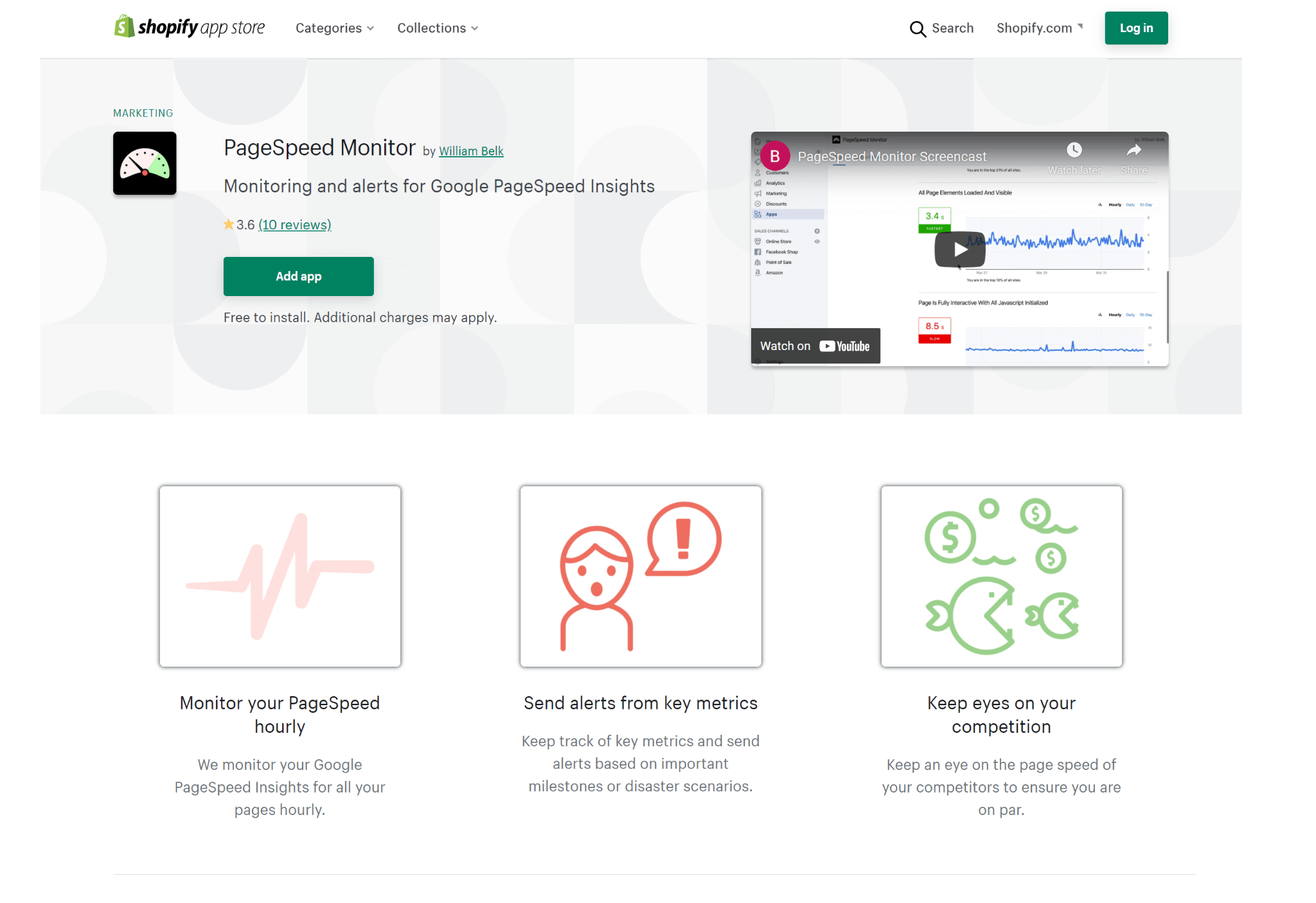 If you’re looking for the best Shopify analytics plugin, you need to come up with a compelling reason to use something other than Google Analytics. Both free and highly functional, GA is an immensely valuable tool, and the need to access most of it through Google’s interface instead of the Shopify dashboard is no great hardship. There are, though, some elements of Google’s services that are worth carrying through directly, and this is a prime example.
If you’re looking for the best Shopify analytics plugin, you need to come up with a compelling reason to use something other than Google Analytics. Both free and highly functional, GA is an immensely valuable tool, and the need to access most of it through Google’s interface instead of the Shopify dashboard is no great hardship. There are, though, some elements of Google’s services that are worth carrying through directly, and this is a prime example.
PageSpeed Monitor makes it easy to automate scans of your store’s speed, pulling through the results on an hourly basis. You can also set up scans of rival websites, allowing you to chart the data against search rankings to yield insight into how performance affects your SEO, or set an alert to trigger in the event that a key metric drops below an acceptable level.
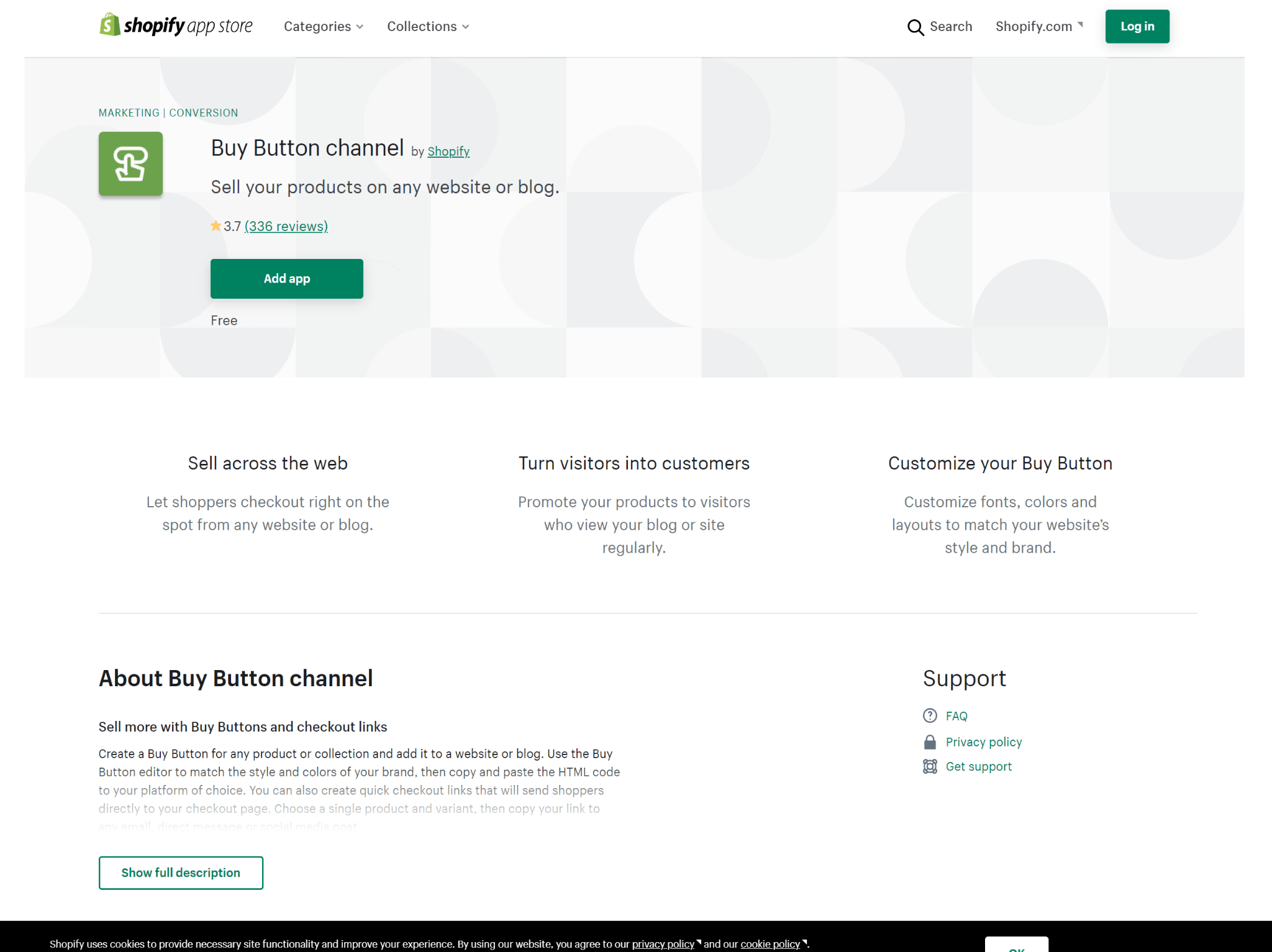
Promoting your Shopify store through other websites and sales channels is certainly valuable, but that activity doesn’t always pay off. Sometimes the visitors to a site don’t much want to follow links to sites and end up spending time trying to figure out what they have to offer. But what if you could offer them your products directly? They may be sufficiently interested to buy immediately. This is why it’s so useful to have buy buttons that you can place anywhere.
Buy Button Channel is the top option for generating these direct-to-purchase links. You can customize them to ensure that they match your branding, then place them wherever you want to boost sales. Shoppers can then buy those items where they are without needing to visit your store. You can even use these links for your own website, adding them to your promotional blog posts so your customers can buy from you more expediently.
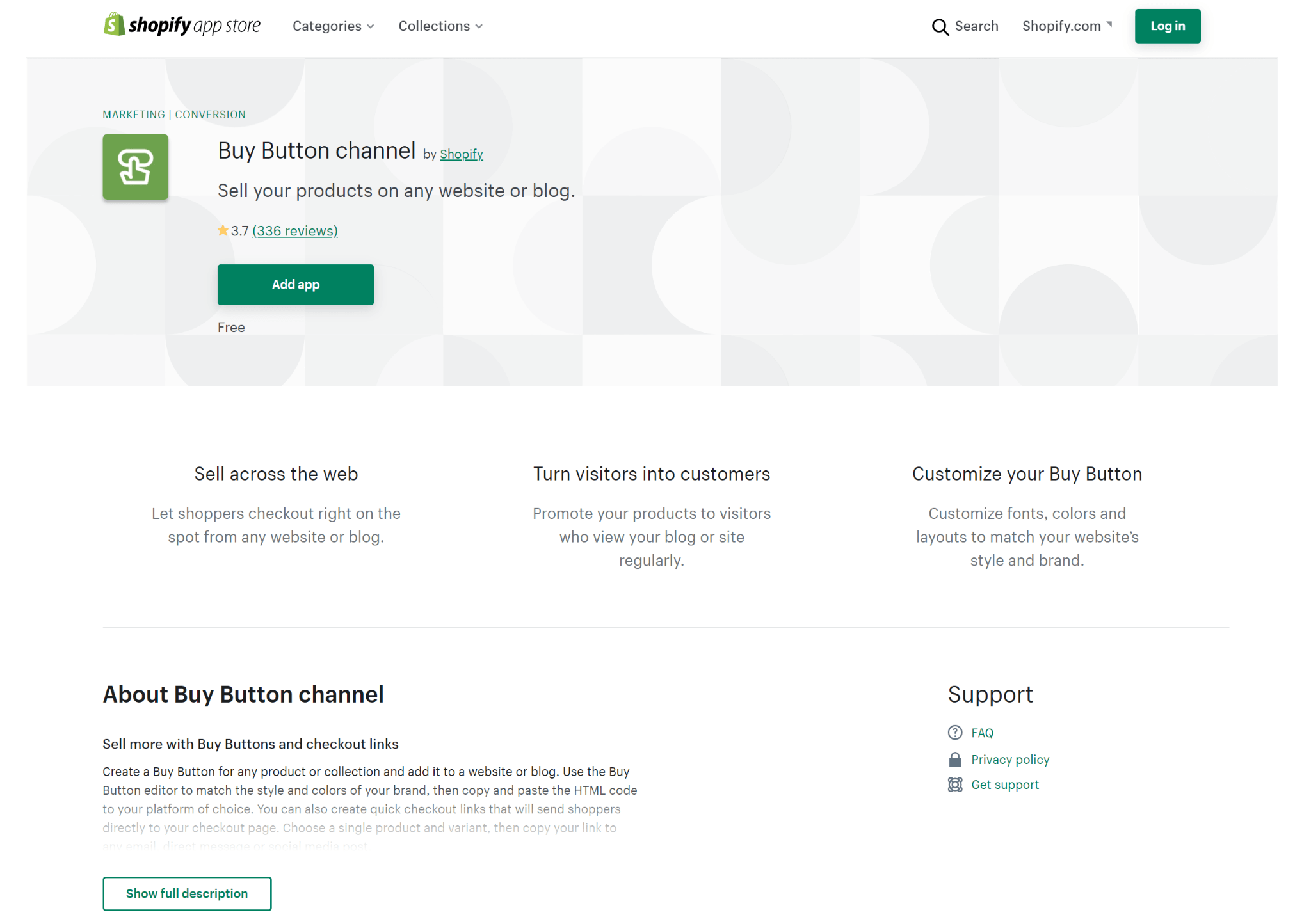
Among the biggest barriers to ecommerce conversion once you have someone interested is the need to create an account. Most people have experienced the frustration of finding the right product at the right price, deciding to order it, then being tasked with completing a wide range of fields that ask for personal information that doesn’t really seem necessary.
Where possible, it’s best to allow people to complete the checkout process without logging in: it’s enough to provide a confirmation number, and possibly email it to the customer if they’ve elected to submit an email address. But the issue with that approach is that it misses out on valuable information. The more you know about someone, the better you can market to them.
One Click Social Login finds the perfect balance between those approaches by allowing shoppers to log in using their already-active social media logins. Someone logged into Facebook, for instance, can share those details in one click, seamlessly moving over all the key pieces of information. It also removes the need to remember passwords when using new stores.
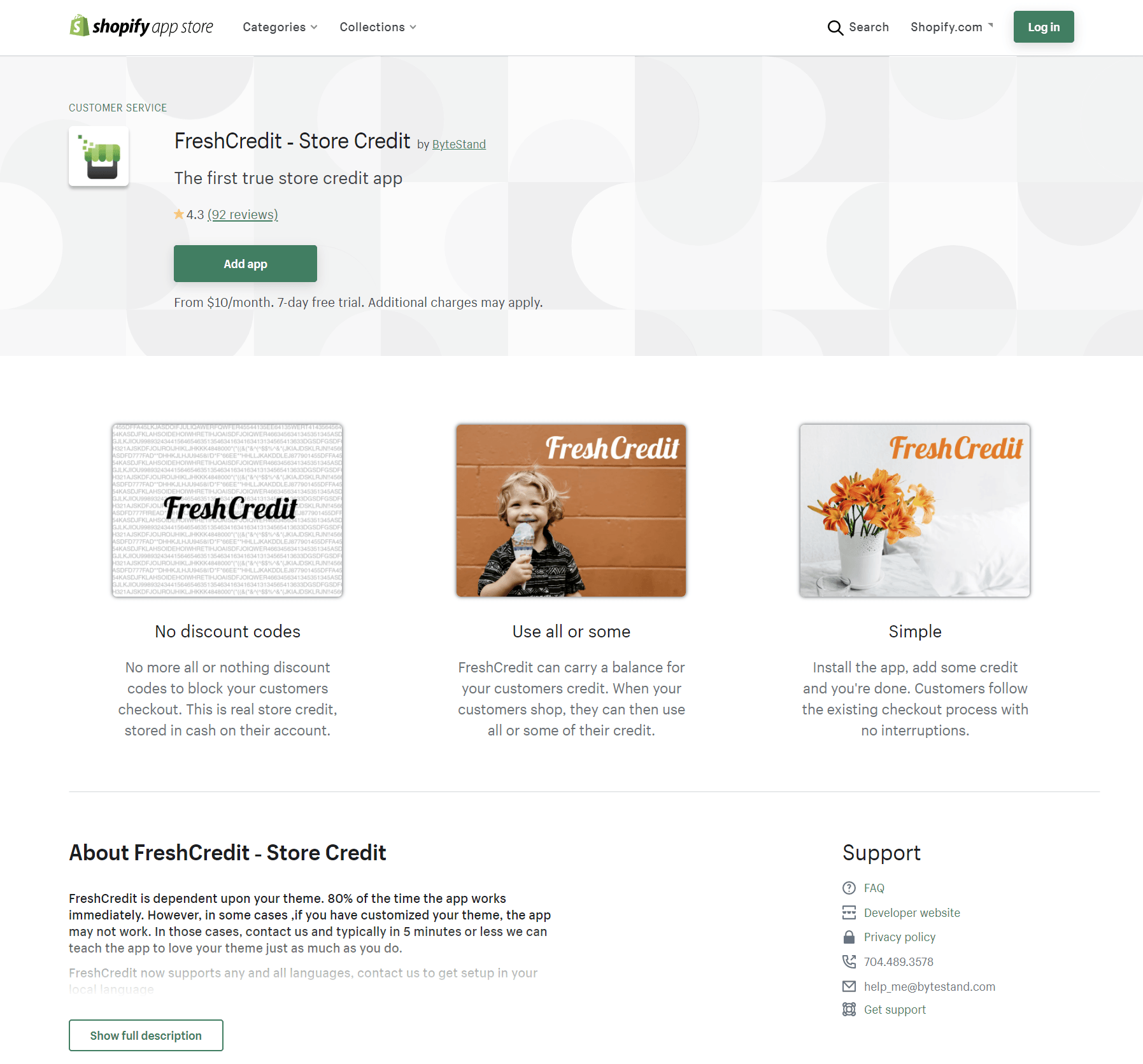
Dealing with returns is always frustrating for ecommerce merchants. Even if the items are barely used, the buffering they take in transit can leave them difficult to resell — and it doesn’t help that online buyers (being unable to inspect used products) are unable to gauge their quality. But the situation gets even worse when a customer returns an item and stops buying from you. You lose revenue through the return, and you don’t get it back through subsequent purchases.
So how do you encourage dissatisfied customers to stick around and try again? You make it easy — and FreshCredit might be exactly what you need. It gives each of your customers a credit balance that you can change when needed: after a return, you can add the appropriate amount to that customer’s credit balance so it’s trivial for them to buy from you again. Forget worrying about temporary discount codes: stick with store credit to maximize your sales.
Although there are countless more Shopify plugins that are certainly worth using, the selection we’ve set out here — the best Shopify plugins, in our estimation — can do much to improve your store without requiring you to put in too much effort. And whether you’re using a 30-day free trial, 14-day free trial, or a free plan, you can get to grips with them without spending anything. So why not get started right away?